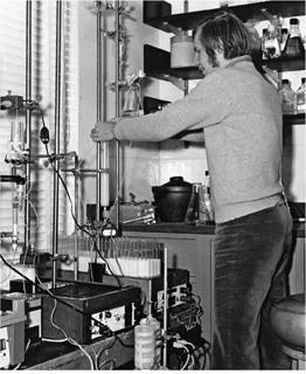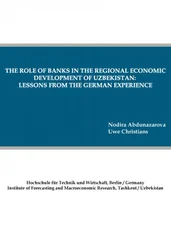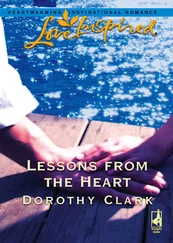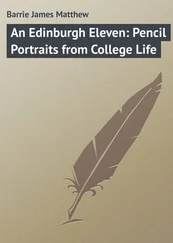James Watson - AVOID BORING PEOPLE - Lessons from a Life in Science
Здесь есть возможность читать онлайн «James Watson - AVOID BORING PEOPLE - Lessons from a Life in Science» весь текст электронной книги совершенно бесплатно (целиком полную версию без сокращений). В некоторых случаях можно слушать аудио, скачать через торрент в формате fb2 и присутствует краткое содержание. Жанр: Биографии и Мемуары. Описание произведения, (предисловие) а так же отзывы посетителей доступны на портале библиотеки ЛибКат.
- Название:AVOID BORING PEOPLE: Lessons from a Life in Science
- Автор:
- Жанр:
- Год:неизвестен
- ISBN:нет данных
- Рейтинг книги:5 / 5. Голосов: 1
-
Избранное:Добавить в избранное
- Отзывы:
-
Ваша оценка:
- 100
- 1
- 2
- 3
- 4
- 5
AVOID BORING PEOPLE: Lessons from a Life in Science: краткое содержание, описание и аннотация
Предлагаем к чтению аннотацию, описание, краткое содержание или предисловие (зависит от того, что написал сам автор книги «AVOID BORING PEOPLE: Lessons from a Life in Science»). Если вы не нашли необходимую информацию о книге — напишите в комментариях, мы постараемся отыскать её.
AVOID BORING PEOPLE: Lessons from a Life in Science — читать онлайн бесплатно полную книгу (весь текст) целиком
Ниже представлен текст книги, разбитый по страницам. Система сохранения места последней прочитанной страницы, позволяет с удобством читать онлайн бесплатно книгу «AVOID BORING PEOPLE: Lessons from a Life in Science», без необходимости каждый раз заново искать на чём Вы остановились. Поставьте закладку, и сможете в любой момент перейти на страницу, на которой закончили чтение.
Интервал:
Закладка:
Alex Rich(b. 1924)—He spent four years at the National Institutes of Health before moving in 1954 to MIT, where he continued work on nucleic acids, in particular their 3-D structures. He was honored with the National Medal of Science in 1995 and still maintains an active research career as MIT's William Thompson Sedgwick Professor of Biophysics.
John Richardson(b. 1938)—After post-doctoral research at the Institut Pasteur, he joined the faculty of Indiana University, Bloomington, where his research continues to focus on RNA synthesis from DNA templates.
Bob Risebrough(b. 1935)—After Harvard, he pursued a career as a conservation biologist. He lives in California, working at the Bodega Bay Institute and most recently focusing his research on the endangered California condor.
Keith Roberts(b. 1945)—He remains at the John Innes Centre in Norwich, where he served for ten years as head of its Cell Biology Department. In 1983 he helped author the widely used Molecular Biology of the Cell, now in its fifth edition.
Rich Roberts(b. 1943)—He shared the 1993 Nobel Prize in Physiology or Medicine with Phil Sharp for their independent 1977 discovery of RNA splicing, using adenovirus DNA. While at Cold Spring Harbor Laboratory, his lab discovered some one hundred new restriction enzymes. In 1992 he moved to New England Biolabs, a major provider of research reagents, where he is currently chief scientific officer.Charles S. Robertson(1905-1981)—He was stricken with Alzheimer's disease in the late 1970s, and died in 1981 at his home in Delray Beach, Florida.
Henry Rosovsky(b. 1927)—He stepped down as dean of the Faculty of Arts and Sciences at Harvard in 1984, and in 1996 retired as the Lewis P. and Linda L. Geyser University Professor Emeritus. In 1990 he published The University: An Owner's Manual, a book about his experiences in the world of higher education.
Jonas Salk(1914-1995)—In his last decade, his focus was increasingly on AIDS and the need for an effective vaccine against it. He directed the Salk Institute until his death.
Joe Sambrook(b. 1939)—He left Cold Spring Harbor Laboratory in 1985 to head the department of biochemistry at the University of Texas Southwestern Medical Center. Ten years later, he moved to the Peter MacCallum Cancer Centre in Melbourne, Australia, where he has played an active role in advancing breast cancer research. In 2006 he was appointed Executive Scientific Director of the Australian Stem Cell Centre.
David Schlessinger(b. 1936)—After receiving his Ph.D. from Harvard, he completed his postdoctoral training at the Institut Pasteur and then joined Washington University in St. Louis, eventually to serve as professor of molecular microbiology. In 1997 he moved to the National Institute on Aging in Baltimore, Maryland, where he is currently Chief of its Laboratory of Genetics.
Phil Sharp(b. 1944)—After leaving Cold Spring Harbor, he spent the rest of his career at MIT where he has headed its Center for Cancer Research (1985-1991), the Department of Biology (1991-1999), and the McGovern Institute for Brain Research (2000-2004). In 1993 he shared the Nobel Prize in Physiology or Medicine with Rich Roberts for their independent discovery of RNA splicing. He co founded Biogen in 1978 and, more recently, Alny-lam Pharmaceuticals (2002).
Tracy Sonneborn(1905-1981)—He spent the rest of his career at Indiana University, Bloomington; he retired from teaching in 1976 but continued to do research until his death at the age of seventy-five.Günther Stent(b. 1924)—In 1952 he moved from Caltech to the University of California at Berkeley, where he has remained since. During a 1972 sabbatical at Harvard, be began studying neurobiology, and soon developed a leech colony at Berkeley to support his lab's neuroembryology and neurophysiol-ogy research. He is currently professor emeritus of neurobiology.
Leo Szilard(1898-1964)—He remained loosely affiliated with the University of Chicago until he became a founding fellow of the Salk Institute in 1963. Only several months after moving there, he died of a heart attack and his ashes, at his wish, were dispersed over the Pacific Ocean.
Howard Temin(1934-1994)—Howard remained at the University of Wisconsin for his entire academic career. In 1975, with Renato Dulbecco and David Baltimore, he was awarded the Nobel Prize in Physiology or Medicine for research on tumor viruses. Though never a smoker, he became a victim of lung cancer, dying at the early age of fifty-nine.
Alfred Tissières(1917-2003)—He remained at the Department of Molecular Biology of the University of Geneva for the rest of his career, living with his wife, Virginia, in the nearby village of Vandoeuvres. A sabbatical year at Caltech led to his influential work on the heat shock response in Drosophila.
Alex Todd(1907-1997)—After his work on the structure and synthesis of nucleotides, which won him the 1957 Nobel Prize in Chemistry, he continued to work on the structures of a variety of molecules found in insects and plants. He retired from his positions as professor of organic chemistry at Cambridge University in 1971 and lived in Cambridge until his death.
Niccolò Visconti di Modrone(1920-2004)—After working between 1950 and 1954 on phage genetics with AI Hershey at Cold Spring Harbor, Niccolò left research for business and cofounded the pharmaceutical company Lepetit, and later Pierrel. Upon retiring, he took up residence in his hometown of Milan and maintained a close friendship with his colleagues at CSHL, including Waclaw Szybalski, Evelyn Witkin, and Barbara McClintock.
Liz (Lewis) Watson(b. 1948)—She has received master's degrees in historic preservation from Columbia University and in library and information science from Long Island University. She has devoted much time to preserving
the historic buildings of Cold Spring Harbor Laboratory and in 1991 published a pictorial history of CSHL titled Houses for Science. For many years she was also a member of the Huntington Historic Preservation Commission, and in 2001 she was appointed by Governor George Pataki to the New York State Board for Historic Preservation.Klaus Weber(b. 1936)—Since 1975 he has worked at the Max Planck Institute for Biophysical Chemistry in Göttingen, Germany, where he is now professor emeritus. Along with wife Mary Osborn, he pioneered the use of immunofluorescence microscopy and has made significant contributions to the study of the cytoskeleton.
Jerome Wiesner(1915-1994)—He served as president of MIT from 1971 to 1980 and devoted a majority of his time after retirement to teaching and policy research, strongly focusing on nuclear arms control.
Maurice Wilkins(1916-2004)—After his contributions to the double helical structure of DNA at King's College, London, he focused increasingly on issues of the social responsibility of scientists, teaching undergraduate courses on the topic and serving for twenty-two years as president of the British Society for Social Responsibility in Science. He was also very proud of his involvement in the Campaign for Nuclear Disarmament.
Carroll Williams(1916-1991)—He spent his entire career in insect physiology at Harvard, starting with the completion of both his Ph.D. and M.D. and his appointment to its faculty in 1946, from which he retired in 1987.
Edward 0. Wilson(b. 1929)—He is currently Pellegrino University Professor Emeritus and curator of entomology at the Museum of Comparative Zoology at Harvard University. In recent years his interests have turned increasingly to conservation biology.
Читать дальшеИнтервал:
Закладка:
Похожие книги на «AVOID BORING PEOPLE: Lessons from a Life in Science»
Представляем Вашему вниманию похожие книги на «AVOID BORING PEOPLE: Lessons from a Life in Science» списком для выбора. Мы отобрали схожую по названию и смыслу литературу в надежде предоставить читателям больше вариантов отыскать новые, интересные, ещё непрочитанные произведения.
Обсуждение, отзывы о книге «AVOID BORING PEOPLE: Lessons from a Life in Science» и просто собственные мнения читателей. Оставьте ваши комментарии, напишите, что Вы думаете о произведении, его смысле или главных героях. Укажите что конкретно понравилось, а что нет, и почему Вы так считаете.












